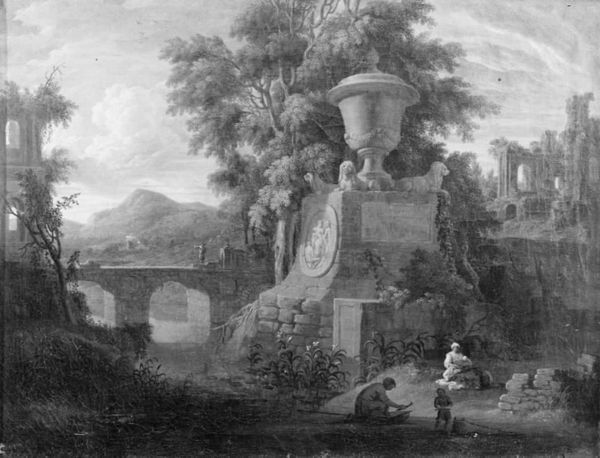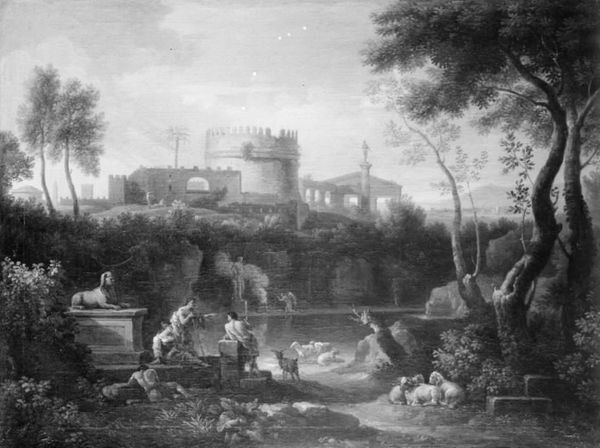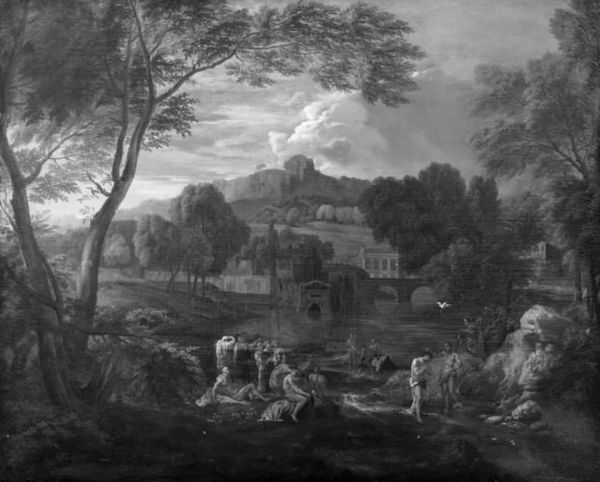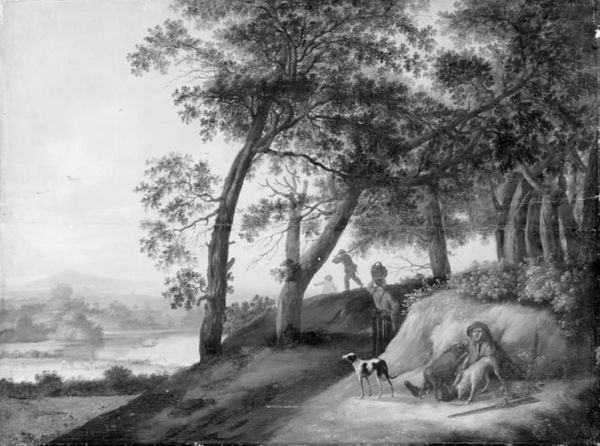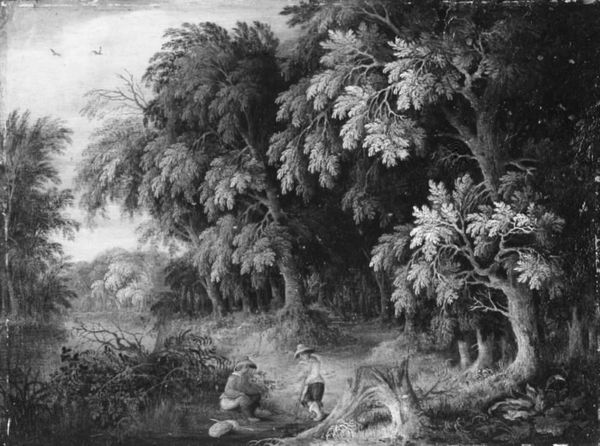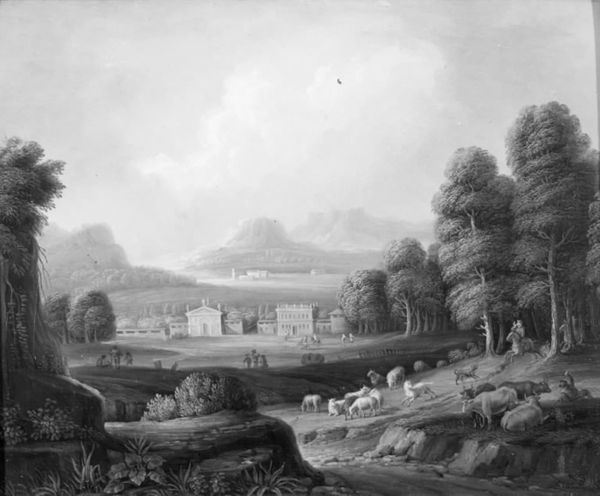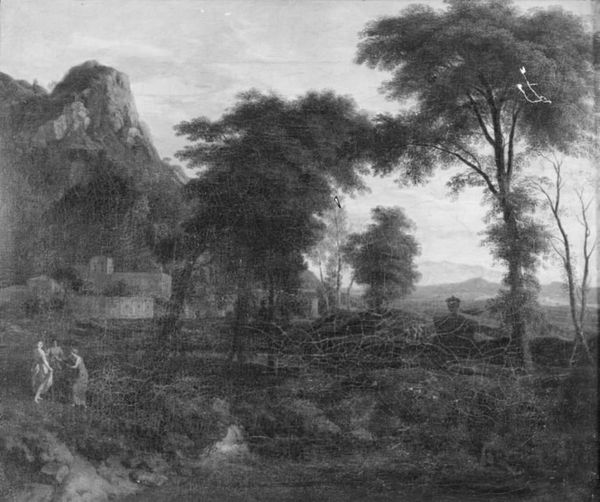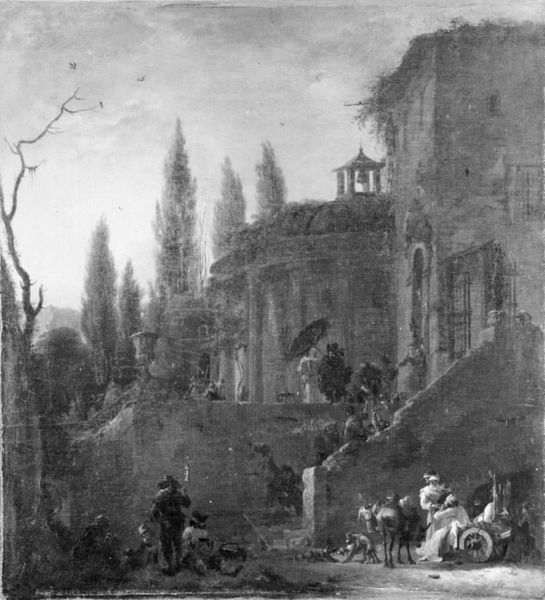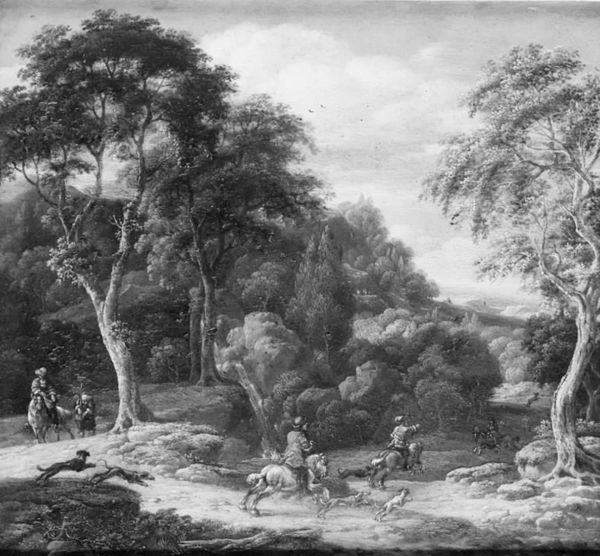
Landscape with the Tomb of Cecilia Metella 1715 - 1720
0:00
0:00
painting, oil-paint
#
baroque
#
painting
#
oil-paint
#
landscape
#
classical-realism
#
history-painting
#
monochrome
#
charcoal
#
monochrome
Dimensions: 137 cm (height) x 98 cm (width) (Netto)
Curator: Let's turn our attention to "Landscape with the Tomb of Cecilia Metella" created between 1715 and 1720 by Jan Frans van Bloemen. This painting resides here at the SMK, offering us a fascinating look into early 18th-century landscape art. Editor: It immediately strikes me as melancholic, even somber. The monochrome palette gives it a timeless, almost sepia-toned quality. It's serene, yet something about the architectural ruins hints at the transience of power. Curator: Van Bloemen, nicknamed "Orizzonte," specialized in idealized landscapes that were highly sought after by aristocratic European travelers on the Grand Tour. The actual Tomb of Cecilia Metella, a prominent Roman landmark, provided a classical anchor, but this isn’t a literal depiction. Editor: Absolutely, this isn't just a picturesque scene, it’s layered. The Tomb, the grazing sheep, even the reclining figure, contribute to a constructed pastoral idyll but one carrying undercurrents of loss and reflection. How conscious do you think he was of idealizing the conditions of rural life versus acknowledging rural struggles? Curator: The intention was less about direct social commentary and more about appealing to the refined tastes of his patrons. These paintings allowed viewers to position themselves within a classical, idealized past— a comforting, and carefully curated fantasy that was politically charged even as it may not seem to be at first glance. This tomb acts like a backdrop onto which they project an imagined version of Roman civilization, right? Editor: It raises complex questions. Who gets to construct history and whose voices are silenced in the process? We’re presented with a beautifully rendered scene, yes, but also a vision that potentially excludes or diminishes the experiences of those not wealthy or privileged enough to indulge in the "Grand Tour". The monochrome in particular strips away identifying markers of colour or specificity. Curator: That is precisely the tightrope Van Bloemen and other artists of the period walked— creating beautiful art that resonated with powerful patrons while navigating the social and political undercurrents of their time. Editor: I appreciate you illuminating those complexities. This painting invites us to look deeper than surface-level beauty and consider the forces that shaped its creation and reception. Curator: And hopefully inspires continued dialogue about how we interpret these kinds of idealized visions.
Comments
No comments
Be the first to comment and join the conversation on the ultimate creative platform.

